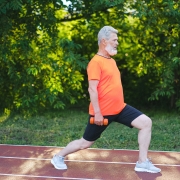A One-Hour Walk in Nature Decreases Activity in the Stress-Related Regions of the Brain
A recently published study compared the effects walking in different environments has on the brain. Study participants were randomly assigned to go on a 60-minute walk in a natural or urban environment, and questionnaires and fMRI scans were administered before and after the walk. fMRI scans were used to measure the activation of different brain regions, while questionnaires were used to gauge participant’s perceived mood and stress levels. The study found that a one-hour walk in nature decreased activity in the amygdala, while no change was seen after a one-hour walk in an urban-environment. The amygdala is the part of our brain primarily associated with regulating emotions and processing stressful events. An overactive amygdala is associated with anxiety, while, decreased activity has an anxiolytic effect. Therefore, the findings of thisstudy suggest a walk in nature may be more beneficial for managing stress than a walk in the city. Additionally, our environment plays an important role in the cognitive benefits of walking. This study is a great example of how multiple components of lifestyle medicine can come together. Exercise and being in nature are both powerful tools for managing stress and improving mental health; however, their effect is even more potent when combined.
By: Maya Shetty, BS, Lifestyle Medicine Fellow
Journal Reference:
- Sudimac S, Sale V, Kühn S. How nature nurtures: Amygdala activity decreases as the result of a one-hour walk in nature. Mol Psychiatry. 2022 Sep 5. doi: 10.1038/s41380-022-01720-6. Epub ahead of print. PMID: 36059042.







